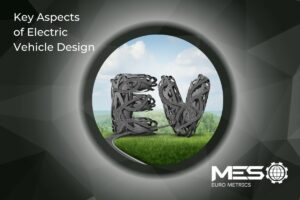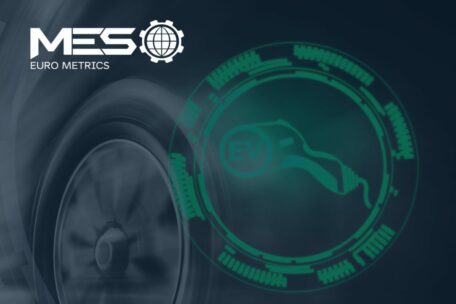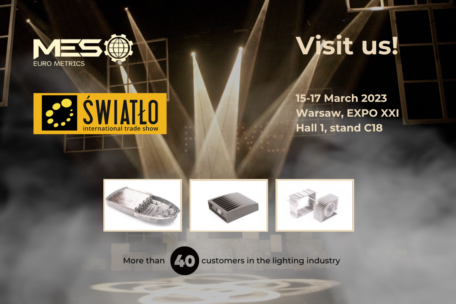
Our new movie
See what our work looks like! How are we doing? How do we source suppliers and who do we provide our services to? Today we talk about our activities - watch the video, meet
Read More There are numerous innovations in the electric vehicle market. Companies are focused on improving the production of batteries, engines, transmissions and other parts of the car that are necessary for its proper functioning. Work is also underway to produce hydrogen fuels and fuel cells.
There are numerous innovations in the electric vehicle market. Companies are focused on improving the production of batteries, engines, transmissions and other parts of the car that are necessary for its proper functioning. Work is also underway to produce hydrogen fuels and fuel cells.
In MES we work on thermal management and design of components used in electric vehicles. Today, these are key areas of our research. We delve into the enabling aspects of electric vehicle development, component design, benchmarking of various global electric vehicle designs and R&D on testing methods, material combinations, and design features that will help design highly efficient components.
1) DC converters: The heart of any EV vehicle is the high voltage battery. It is essential to step down this high voltage current into a 12/24V onboard circuit to power various applications and components in an electric vehicle.
2) Inverters: Inverters convert the DC power from the batteries into AC power used to operate electric vehicle motors. DC power is fed to the primary winding in a transformer within the inverter housing. Through an electronic switch (generally a set of semiconductor transistors), the direction of the flow of current is continuously and regularly flip-flopped (the electrical charge travels into the primary winding, then abruptly reverses and flows back out).
3) Battery Equalisers: The bottleneck for EVs is the high-voltage battery pack, which utilizes most of the space and increases the vehicle’s weight. Currently, the main challenge for the electronics industry is the cell equalisation of the battery pack.
Charge equalisation for series-connected battery strings has essential ramifications on battery life. Battery equalizers enhance the uniformity of the battery cells and improve the life of the battery. The basic technique utilises a simple isolated dc-to-dc converter with a capacitize (capacitive) output filter along with a multi winding transformer. Many OEMs have developed and are continuing to integrate the trickle charge function with the charge equalisation function, improving battery efficiency, life, and lower cost implementation instead of frequent battery charging or using more batteries than required.
4) Electric drive: The drive system is the centerpiece of a battery-electric vehicle. Comprising the power electronics, e-motor, transmission, and battery, the drive system generates zero local CO2 emissions and delivers full torque right from the start. In 2030, one in three vehicles will be a battery-electric vehicle thanks to the electric drive’s steadily improving efficiency and the sinking total cost of ownership for such models.
5) Generator (onboard chargers): Onboard vehicle chargers convert AC energy from the electrical grid to DC energy required to recharge batteries. Battery chargers for plug-in electric vehicles are currently based on proven, traditional, high-frequency charger circuits. They can be located either on the vehicle or off board, as part of a DC fast charger.
6)Electronic power control units: A controller unit is an inverter and converter combination that recharges the battery pack of an EV during regenerative braking, which develops kinetic energy while braking. The flow of energy to and from the battery is controlled using a controller unit in tandem with the Converter-Inverter combinations.
7) Thermal systems: Electric vehicle components such as inverters, motors, batteries, battery equalisers, power management, and others use tremendous power and generate a lot of heat. Thermal management entails regulating heat flows inside the vehicle. Components must be operated in their respective optimal temperature range while generating pleasant temperatures for passengers in the vehicle interior. These systems are very complex than in conventional vehicles featuring combustion engines. In an EV, axles must be cooled at all times, while the battery needs to be cooled or heated depending upon the respective drive situation.
The refrigerant circuit and the cooling circuit must be optimally coordinated to transport heat inside the vehicle and provide the requisite temperatures. Interconnection of these two circuits changes depending upon the heating or cooling requirements.
8) Battery pack: The development of battery pack technology has been the single most limiting factor in development and utilization of EV vehicles. Batteries are used to power many high voltage systems such as HVAC and motors and low voltage systems powering various electric vehicle components.
The most common battery type in modern electric vehicles is lithium-ion and lithium-polymer, because of their high energy density compared to their weight. Other types of rechargeable batteries include lead-acid, nickel-cadmium, nickel-metal hydride, and others.
9) Transmissions: Internal combustion engines only generate usable torque and power in a narrow band of engine speeds. To accelerate the vehicle, multispeed transmissions step that down, in varying gear ratios, to keep the engine in its powerband. Keeping the engine in its power band also proves to be the most efficient and durable. Interestingly, electric motor-generators generate 100% of their torque at very low speeds. They also have a wide operating range. At the bottom end, they can go all the way to 0 RPM without stalling. There is no need to idle, and when you hit the pedal, full power is available. This is the reason electric vehicles do not need a traditional multispeed transmission. Hence, a vehicle like Tesla Model S, is equipped with a single-speed 9.73:1 step-down transmission.

See what our work looks like! How are we doing? How do we source suppliers and who do we provide our services to? Today we talk about our activities - watch the video, meet
Read More
EV – a developing technology that changes the automotive market There are more and more electric vehicles, which are constantly gaining supporters. We can see many factors that are responsible for this state of
Read More
Light Fairs 2023 - let's meet! Increasing luminous efficiency, smart cities, IoT - lighting fixtures have long ceased to be assessed in terms of their basic function. Today, apart from design and efficiency, comercial
Read More